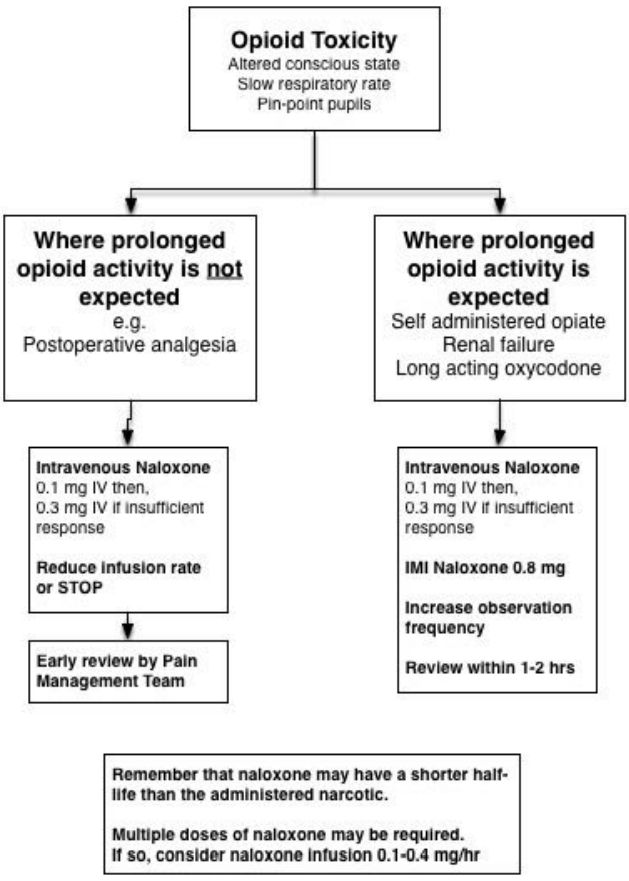Difference between revisions of "LOC-OVER SEDATION MANAGEMENT"
From NeuroRehab.wiki
(Imported from text file) |
(Imported from text file) |
||
| (5 intermediate revisions by the same user not shown) | |||
| Line 1: | Line 1: | ||
===== [[Summary Article|'''SUMMARY''']] ===== | |||
1. Most common cause of LOC is over-sedation | |||
<br/>2. Most commonly due to opioid toxicity, managed with Naloxone/Flumazenil | |||
<br/>3. Note that IM Naloxone lasts longer (approx. 2 hrs)! Can be used if IV Naloxone infusion is not an option | |||
<br/>4. Naloxone infusion: 1 mg to 100 mL, 10-40 mL/hr | |||
<br/>5. Flumazenil infusion: 0.1-0.5 mg, 10-40mL/hr | |||
<br/> | |||
<br/>[[Image:paste-96e9843f97124e0f7852f4a914795abb63f30f24.jpg]] | |||
[[Category:Loss Of Consciousness]] | [[Category:Loss Of Consciousness]] | ||
[[Category:Advanced Life Support]] | [[Category:Advanced Life Support]] | ||
Latest revision as of 11:31, 1 January 2023
SUMMARY
1. Most common cause of LOC is over-sedation
2. Most commonly due to opioid toxicity, managed with Naloxone/Flumazenil
3. Note that IM Naloxone lasts longer (approx. 2 hrs)! Can be used if IV Naloxone infusion is not an option
4. Naloxone infusion: 1 mg to 100 mL, 10-40 mL/hr
5. Flumazenil infusion: 0.1-0.5 mg, 10-40mL/hr
